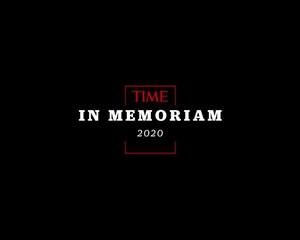We learned a lot in 2020—but what, exactly, did we learn? The bromides are already flowing freely: We slowed down. We learned what was important. We played board games and did jigsaw puzzles and really talked and listened to our children. All of those are undoubtedly good things, and we nod in solemn agreement when our neighbors enumerate those little blessings. But do any of them capture the microtexture of what our lives were like this year? In our cities, when we were told we shouldn't go out at all except for occasional exercise, walks in the sunshine became the thing we hung onto. How lucky we were to be able to do that, at least! In the suburbs, our restricted routines opened new routes of creativity: we might drive out of our way to catch a spectacular sunset, or finally tackle a hiking trail we'd always meant to explore. Then came the time when it became possible to meet a friend for a takeout glass of wine—this became the summer of lukewarm and acidic rosé in a plastic cup, but it represented a privilege and a pleasure that, in earlier months, we weren't sure we'd have.
2020年我們學到了很多,但具體學到了什么呢?各種陳詞濫調已經泛濫:我們慢下來了;我們知道了生命中什么東西最重要;我們一起玩棋盤游戲,拼圖,和孩子們交談,傾聽他們的心聲。所有這些無疑都是好事。當我們的鄰居列舉這些小小的祝福時,我們都會鄭重地點頭表示同意。但是,他們當中有人捕捉到今年生活的微觀結構了嗎?我們在自己的城市里,當被告知除了偶爾運動外不能外出時,在陽光下散步成了我們唯一能夠堅持的事情。至少我們還能在陽光下散步,這已經非常幸運了!在郊區,備受限制的日常生活為我們的創造力開辟了新道路:我們可能會開車去欣賞壯觀的日落,或者最后去探索自己一直想要探索的徒步旅行路線。之后,我們可以和朋友一起喝個外賣紅酒,雖然這變成了一個不溫不熱的夏天和用塑料杯子盛著的酸酸的玫瑰紅葡萄酒,但它代表了一種特權和快樂,之前的幾個月里我們并不確定自己能夠享有這種特權和快樂。

When museums finally reopened, carefully limiting capacity, we were able to reacquaint ourselves with paintings we love, with golden objects that had been placed in the tombs of kings 3,000 years ago, with vessels that our ancestors used for simple but essential tasks like toting water from here to there. To step close and examine a 400-year-old brushstroke connects you with the human who put it there. It bears remembering that the Renaissance came into being even as the Black Death decimated much of Europe. Michelangelo and Rembrandt painted in its shadow; the plague took Titian's life. Our lives may be hard—this week, this month, this year—but look at what others did during eras of hardship. The trail of vitality and beauty they left behind is enough to make us cry, and sometimes we do—we can give them that much, at least.
當博物館終于重新開放并開始嚴格限流時,我們能夠重新讓自己熟悉自己喜愛的繪畫,熟悉3000年前放置在國王墓中的黃金物品,熟悉我們的祖先用來完成簡單但重要的任務的器皿,比如將水從這里運到那里。走近并查看一幅有400年歷史的畫作會讓你聯想到畫這幅畫的人。值得記住的是,文藝復興運動是在黑死病肆虐歐洲大部分地區的時候開始的。米開朗基羅和倫勃朗也在黑死病的陰影下作畫;瘟疫奪去了提香的生命。這周,這個月,或者今年,我們的生活可能會很艱難,但看看別人在艱難時期都做了些什么。他們留下的生機與美麗的痕跡足以讓我們哭泣,有時我們確實會哭泣——至少那是我們可以給他們的。
For that reason, perhaps many of us have felt through 2020 that it's easier to connect with old art than with new. All manner of amusements have been streamed right into our homes, some of them quite wonderful. Because nearly all of our movie blockbusters and big year-end spectacles were canceled, we spent more time watching stories about human beings talking to one another rather than chasing down a bunch of magic stones from a bejeweled glove.
因為這個原因,我們中的許多人或許會覺得相比于新藝術,自己和舊藝術更容易產生共鳴。各種各樣的娛樂活動源源不斷涌入我們家中,其中一些還相當精彩。因為幾乎所有的大片兒和大規模的年終表演都被取消了,所以我們花了更多的時間觀看人與人間相互交談的故事,而不是去追尋寶石手套上的一堆魔法石。
譯文由可可原創,僅供學習交流使用,未經許可請勿轉載。











